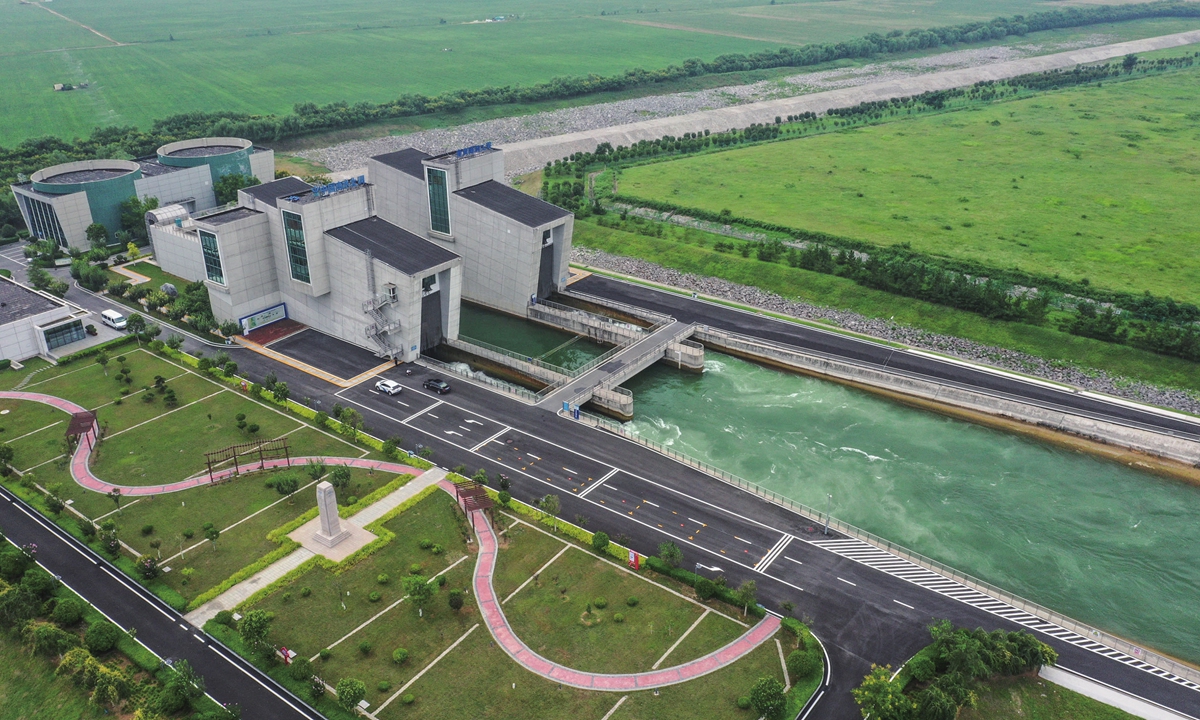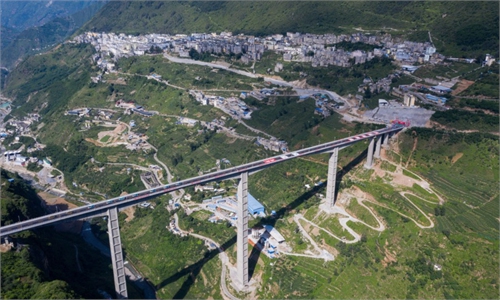
Aerial photo taken on August 26, 2022 shows the Yellow River Crossing Project tunnel of the Middle Line of South-North Water Transfer Project in Central China's Jiaozuo, Henan Province. On August 25, 2022, the Middle Line of South-north Water Transfer Project passed the completion and acceptance stage, presided over by the Ministry of Water Resources. Photo VCG
Although East China’s Jiangsu Province and Central China’s Hubei Province, two main water sources for China's south-to-north water diversion project, have seen extreme heat waves recently, experts said it will not affect the overall operation of the water project, which will play a key role in transferring water from China's water-rich south to the arid north.
In the latest development, a project to go through the bed of the Yellow River passed a verification test on Thursday. It marks the verification passage of all the 155 units in the project and the official operation of the full project, Xinhua News Agency reported.
The official operation of the eastern and central route of the project is expected to optimize China’s hydropower resources and systematically strengthen China’s ability to cope with flood and drought, Chen Jia, an independent research fellow on international strategy, told the Global Times on Friday.
The middle route, the most prominent one due to its role in feeding water to the nation's capital, begins at the Danjiangkou Reservoir in the Hanjiang River in central China’s Hubei and runs northeastward to Beijing and Tianjin. It began supplying water in December 2014.
The eastern route began supplying water in November 2013, transferring water from Jiangsu to areas including East China’s Shandong Province.
As of Thursday, more than 56 billion cubic meters of water has been transferred along the route, generating significant economic, social and ecological benefits.
In August, the sources of the two routes, Yangzhou in Jiangsu and Danjiangkou in Hubei experienced severe heat waves with record-breaking temperatures of over 40 C, triggering concern over the supply of water for the diversion project.
But experts said the hot temperatures won’t affect the stable operation of the project.
“When such mega water facilities are being designed and constructed, issues such as weather conditions are taken into consideration,” Lin Boqiang, director of the China Center for Energy Economics Research at Xiamen University, told the Global Times on Friday.
Water facility departments in the two cities are also taking advantage of the tide of the river to increase the water discharge and ensure water supply along the route.
Dams in Jiangdu district, Yangzhou, a source for the eastern route of the south-to-north water diversion project, have continuously pumped 57.93 million cubic meters of water from July to end August, which is equivalent to filling more than 60 “Slender West Lake”, the Yangtse Evening Post reported.
The Danjiangkou Reservoir in Hubei has increased the water discharge volume and provided 131 million cubic meters of water in four days from August 19 to 22, according to Hubei Daily.
“Even when water shortages occur in parts of these provinces, the national network will quickly make up for it. Therefore, local high temperatures will not affect the overall planning and dispatching of water resources in China,” Chen said.
China has stepped up water conservancy construction this year, with construction of 10,644 new projects valued at 414.4 billion yuan ($60.30 billion) starting in the first five months of the year, Wei Shanzhong, vice minister of water resources, told a press conference in June.
The investment in the country's water conservancy construction is expected to exceed 800 billion yuan this year, official data showed.

